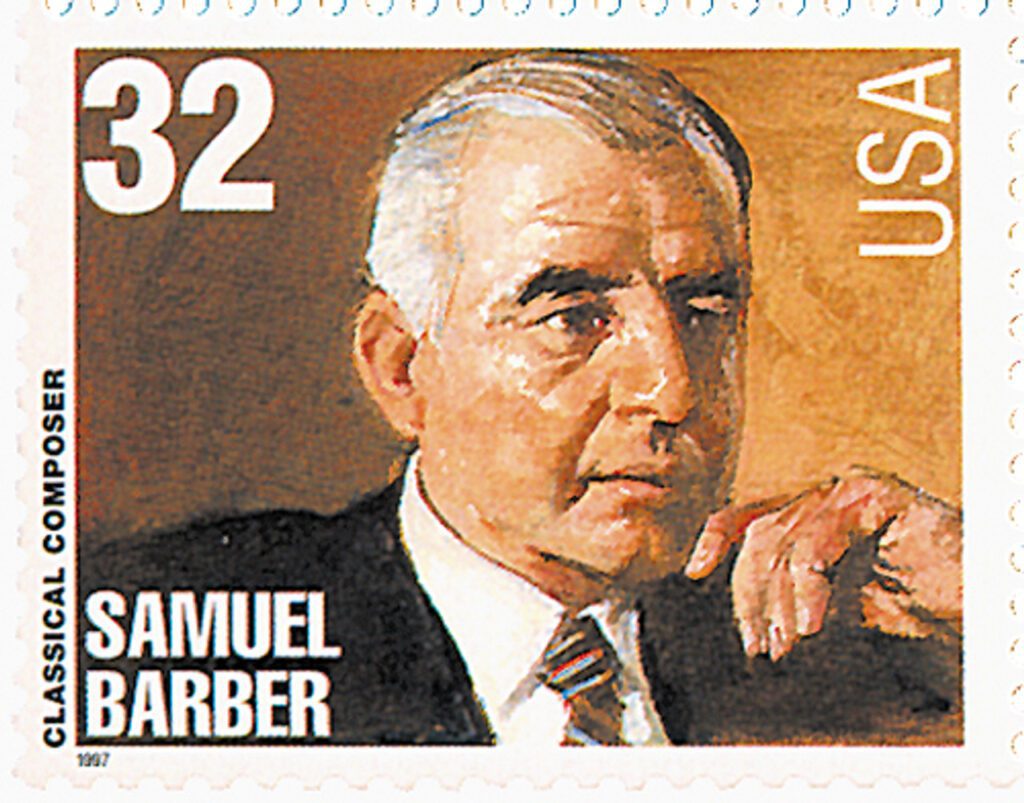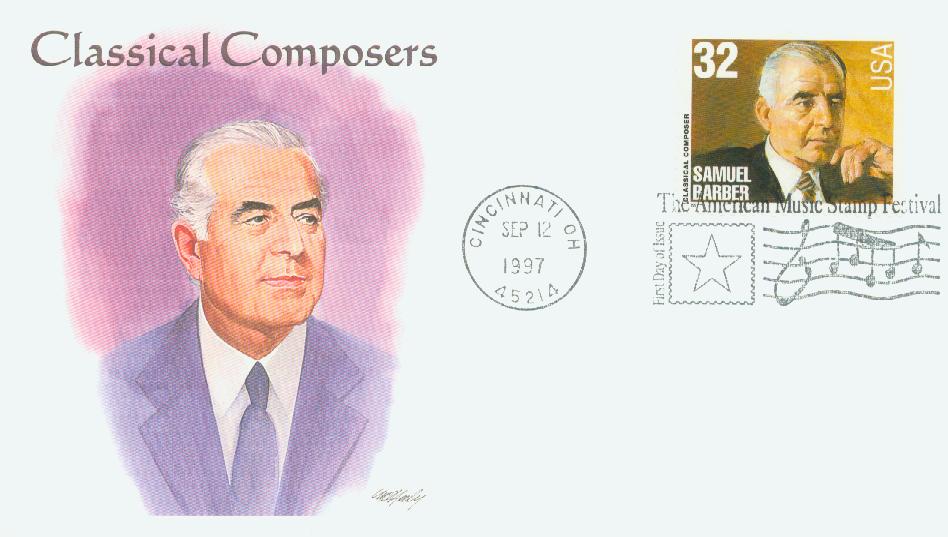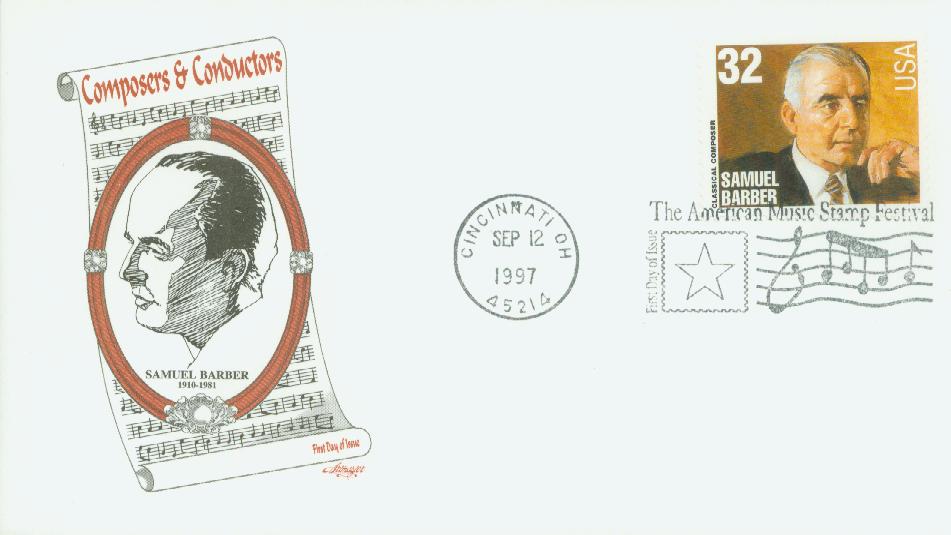Composer and pianist Samuel Osmond Barber II was born on March 9, 1910, in West Chester, Pennsylvania. He was one of America’s most celebrated composers, enjoying early success that lasted throughout his long career.
Barber had a great interest in music from an early age. His mother was a pianist, his aunt a singer with the Metropolitan Opera, and his uncle was a composer. He started playing piano when he was six and within a year he was composing. Barber wrote his first operetta, The Rose Tree, when he was 10 and became a church organist at 12. When he was 14, Barber went joined the youth artist program at the Curtis Institute of Music where he was considered a triple prodigy in composition, voice, and piano. At the same time, he also graduated from high school and wrote the school’s alma mater, which is still used today.
Barber established himself as a serious composer while still a student at the Curtiss Institute. When he was 18, he won a prize from Columbia University for a violin sonata. He won the same prize again in 1931 for his first large-scare orchestral work, The School for Scandal. Other works from this period, including the serenade for string quartet, Dover Beach, and the Cello Sonata, contain the essential elements of his style – successful text-setting and use of tone and orchestrations, as well as long lyrical lines.

After completing the adult professional program at Curtis in 1934, Barber received a Pulitzer traveling scholarship, which sent him to Vienna to study singing and conducting with John Braun. In 1935 Barber met the legendary conductor Arturo Toscanini. Three years later Toscanini conducted Barber’s First Essay for orchestra and the Adagio for Strings. The latter remains his most popular work.
Barber received the Rome Prize in 1935, which sent him to study at the American Academy in Rome. While there he wrote his first work to received international fame, Symphony in One Movement. It premiered in Rome and was later the first American symphonic composition to be performed at the Salzburg Festival. In addition to his compositions, Barber was also a successful baritone singer, performing on NBC radio.
After the US entered World War II, Barber joined the Army Air Corps and was commissioned to write a number of works for the Boston Symphony Orchestra. Among these was Symphony Dedicated to the Air Forces. The period from the 1940s to the early 1960s was Barber’s most productive. He wrote the ballet suite Medea, the symphony Knoxville: Summer of 1915, and earned significant success for his Piano Sonata. In 1946 he received a Guggenheim Fellowship in 1946 and was one of the American composers sent to the Prague Spring International Music Festival.

In the 1950s Barber conducted many of his own songs for performances in the US and abroad as well as for recordings. He won the 1958 Pulitzer Prize for his four-act opera, Vanessa, and a second Pulitzer in 1962 for his Piano Concerto No. 1. This was one of three works he had been commissioned to create for the opening of Lincoln Center. The other two were Andromache’s Farewell and Antony and Cleopatra, which had its premiere at the opening of the new Metropolitan opera House in 1966.
The following year Barber adapted his 1936 Adagio for Strings into a choral work, Agnus Dei, for choirs. He had further success with The Lovers in 1971 and produced his final major work, Third Essay, in 1978. Barber battled cancer in his final years and died on January 23, 1981. One music critic said of Barber, “Probably no other American composer has ever enjoyed such early, such persistent and such long-lasting acclaim.”
Listen to Barber’s Adagio for Strings.
| FREE printable This Day in History album pages Download a PDF of today’s article. Get a binder or other supplies to create your This Day in History album. |
Discover what else happened on This Day in History.





Great article! Lacked proofreading though. Several glowing mistakes. Sorry, I’m a technical writer and see this stuff.
If he was born in 1910 how could he die in 1891?
You must be dyslexic.
He was born in “West Chester.”
I’m really enjoying “this day in history.” Thank you!
Such a talented man! The world is fortunate in having such beautiful music, then and now.
Agree it needs some proofreading. However, have been enjoying This Day in History since you began producing it. Have printed it out to send to a close friend that is also interested in learning about history. Am glad you were able to colorize the stamps listed again and hope you will continue doing that. I commented on that subject on Feb 16th when you colorized that PDF, too, but you went back to black & white the very next day. I enjoy just reading what you offer every day as don’t need to search for other happenings for the day. Thanks!